Best Things To Do in Kashan
- Apr 17, 2018
- 95 Views
Kashan Top Thing to Do
There are a number of exciting things to do in Kashan. From historical sites to cultural attractions, explore the exhaustive list of all other local attractions in Kashan. Discover new places to see and unique things to do nearby Kashan. Don't miss out on these amazing sights at Kashan. Check out the list of attractions and activities to do in Kashan and nearby areas. It will help you to plan a perfect trip to Kashan. Highlights of Kashan includes – Best things to do in Kashan and nearby areas, top attractions to visit such as historical monuments, natural attractions, adventurous and entertainment activities to do, places to eat and drink. Provided with all the things to do in Kashan with address, reviews, facts, photos of travellers & more.

Fin Garden
Fin Historical Edifice and Garden is located to the south of the city of Kashan and near the village of Fin. The same was constructed on the former structures of the Al-e-Booyeh era. Its general layout and aqua system has been rendered special attention. This vicinity gained fame due to the murder of Amir Kabir, the reputed nationalist and Prime Minister (Grand Chancellor) of Nasereddin Shah Qajar. Amir Kabir was assassinated in a small bath here in the year 1268 AH. by the order of the Shah. This garden is a relic from the Safavid period, and has remained such for centuries due to the capacity of water it gains from the Soleimaniyeh spring. Today, this water flows into the ‘Lasegah’ pool after meandering through this beautiful garden, and providing water for the surrounding areas.
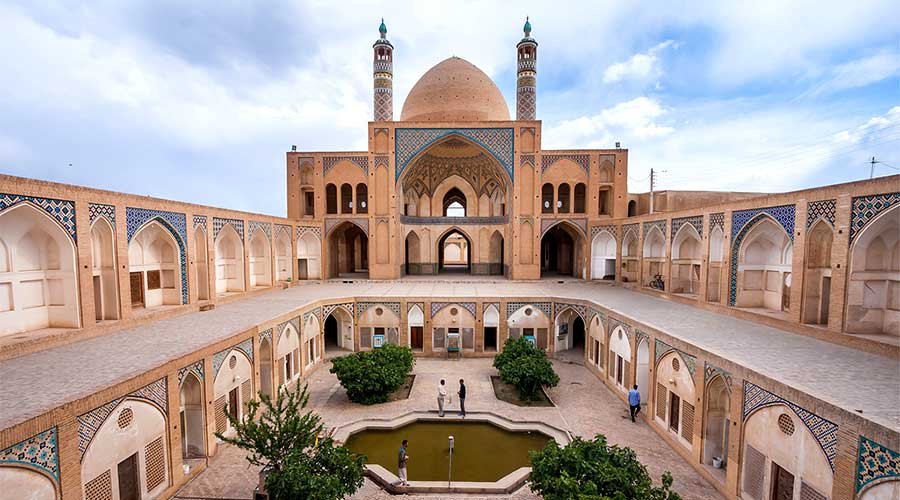
Aqa Bozorg mosque
This ancient structure has four porches and a beautiful dome with two tile worked minarets. Its courtyard and chambers that are on a lower level display an attractive aspect. Below these chambers are is the pool and nocturnal area made use of in summer. The dome is built on an octagonal platform and is doubly covered. The lower covering bears the weight of the ceiling, conducting it to the pillars, and the other is the outer covering which aids in making the dome look larger. Skylights have been affixed to the dome, along with religious versus around the dome have provided a harmonious connection between the different sections of the structure.
The ceilings of the western and winter nocturnal areas are of plaster, which have been designed on simple lines besides which is the library. The porches display intricate tile work, indicating the traditional art and culture of this land and the tombs of several trustees can be noted in the western porch. This structure was constructed in the year 1268 AH.
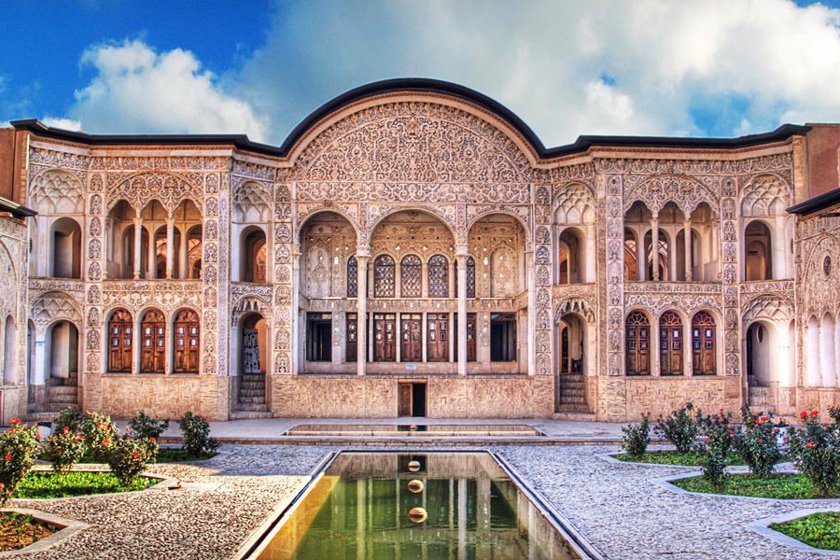
Tabatabai House
The historical houses of Kashan, are some 18th and 19th century buildings recently restored for the curious visitors who appreciate the subtle cultural points in the construction of living structures of Iran. There are several old residential buildings left from 19th and 20th centuries in Kashan.

Old Bazaar
Bazaar of Kashan is an old bazaar in the center of the city of Kashan, Iran. It is thought to have been built in the Seljuk era with renovations during the Safavid period. The bazaar has a famous architecture, especially at its Timche-ye Amin od-Dowleh section, where a grand light well was built in the 19th century. The bazaar is still in use and is a few miles in total length. In the bazaar’s complex beside the main bazaars, there are several mosques, tombs, caravanserais, arcades, baths, and water reservoirs that each were constructed in a different period.
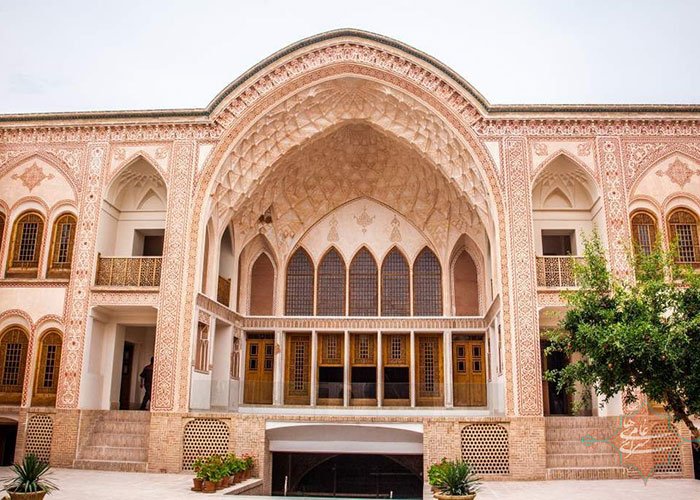
Ameriha House
Ameriha house which is recognized as the majestic table of glory and art of Kashan is the biggest Iranian house with 85 rooms in the form of three traditional houses and five courtyards. This house welcomes travelers who go to Kashan.
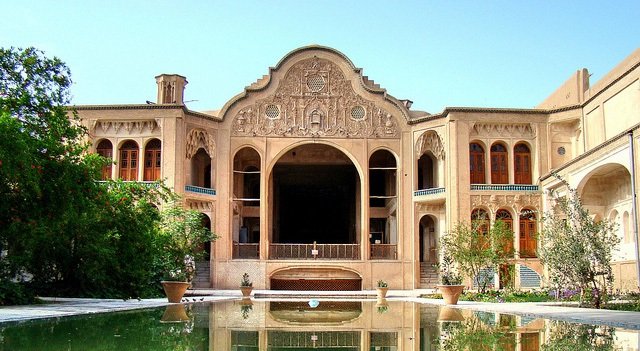
Borujerdi House
This house is located in Kashan and was constructed during the years 1292-1310 AH. by ‘Haj Seyed Jaffar Natanzi’ a merchant who conducted business in Borujerd and Kashan as well. He constructed this house in order to evade religious levies. The entrance to the premises is from an octagonal vestibule and an area utilized by pageboys adorned with a number of multilateral crescents and skylights in the ceiling. Then a long corridor leads to the northern facade of the building. Near the entrance is a five-door chamber with intricate plasterwork. This opens out on a large and roof less porch, capturing the warmth of the sun, and transferring the same to the small symmetrical chambers on either side of this porch. In the northeastern portion of the structure are the kitchen quarters, arranged with shelves, and a special area to provide space for china and other utilities. Whereas in the western and eastern sections are chambers and covered porches. Opposite which is a courtyard and a stairway connecting the main premises to the basement. The basement covers a vast area and is tastefully arranged with wide wall cupboards with carved and lattice worked wooden doors. On either side of the building is the main or entrance staircase leading to the southern part of the structure. Here there is a large porch with a high ceiling giving way to an entertainment hall. Behind which, on a lower level is an octagonal area with a pool or the ‘hauz khaneh’. The same has a domed shaped roof and beautiful skylights. Here the ceiling is vaulted and worked with tiles in harmonious colors. On the walls, portraits of the Qajar sovereigns can be noted, with their guards in formal European apparel. This building is also equipped with cellars that are cool and pleasant for use in the heat of summer. Materials used in the construction of this structure are, stone, brick, sun baked bricks and a composition of clay, straw and mortar.
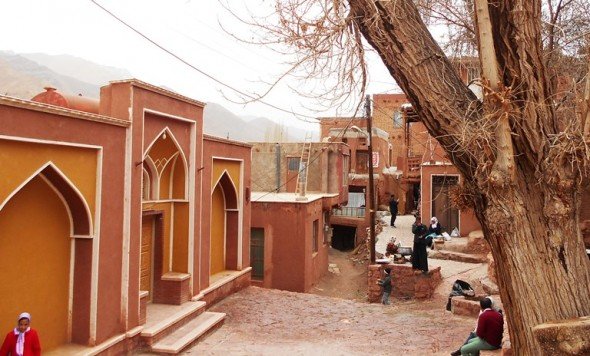
Abyaneh Village
This village is one of the well known in Isfahan province, in addition to which it boasts of a pleasant climate. The same is located in the northwestern slopes of the Karkas Mountains and at a distance of 28 km. from the city of Natanz. The architectural facet in this village along with the rituals and apparel of its inhabitants is a sight to witness. The Jame’ mosque of this vicinity with its historical wooden altar dating to 776 AH, and its wooden pulpit dating to 466 AH. and an inscription in the ‘kufi’ script is greatly valued both as a historical and religious monument.
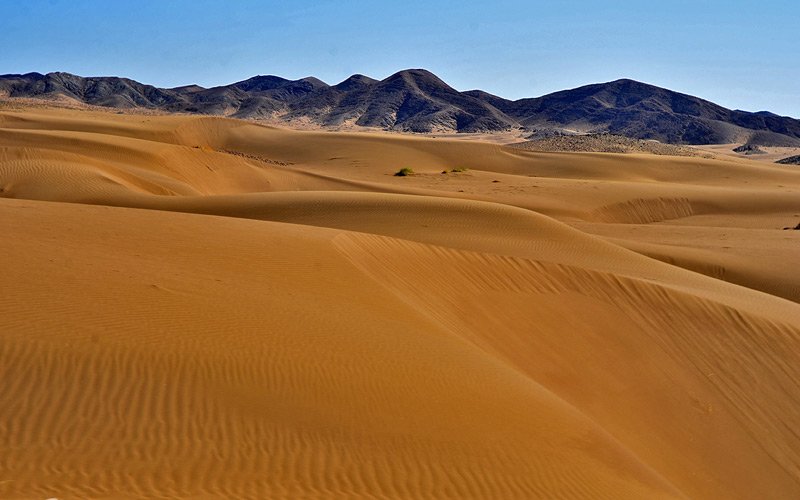
Maranjab Desert
Maranjab Desert is located by the city of Aran va Bidgol, one of the ancient desert cities of Isfahan province. It was once composed of two separate cities, Aran and Bidgol. The Maranjab Desert is also close to Kashan. The town is surrounded by the desert on the north and east, and thus it has a typical climate of hot and dry in summer, cold and dry in winter, and very little rainfall during the year.




